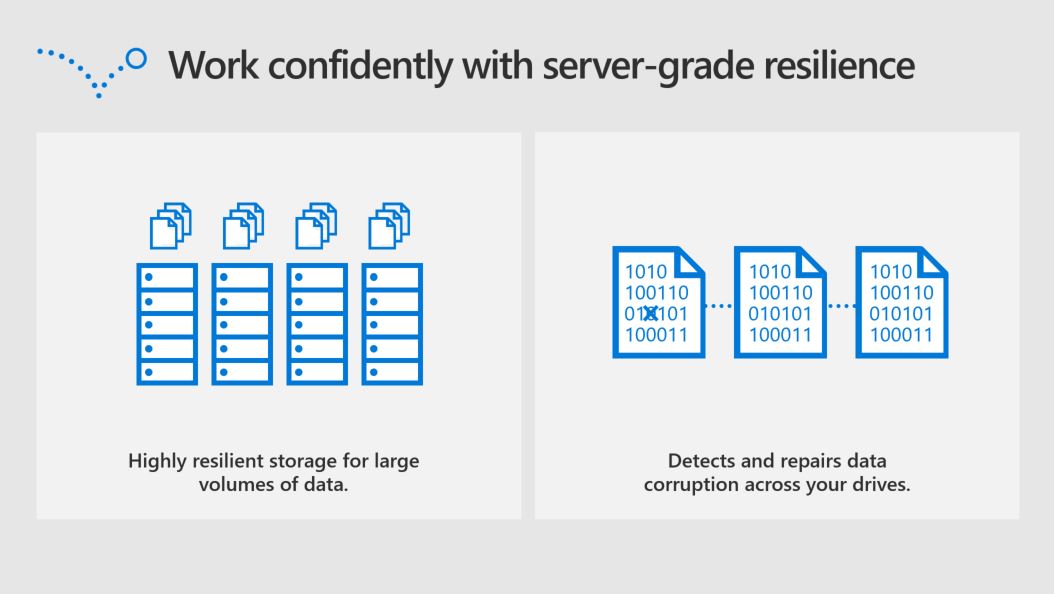In the new world of work, advanced professions increasingly require high-performance computing capabilities. We’re working to ensure Windows meets your needs, even in demanding and mission-critical scenarios, which is why we announced Windows 10 Pro for Workstations in August.
For data scientists transforming big data into input signals and experimenting with multiple machine learning models, processing time equals productivity. The same is true for researchers, engineers, and teams focused on predictive modeling. Content creation roles such as media professionals and graphic designers generate — and need to preserve — an enormous amount of data and intellectual property through their work.
Enter Windows 10 Pro for Workstations. With these devices, you can power through advanced workloads with server-grade data protection & performance.
These are revolutionary performance gains for desktop machines. With these new workstations, you’ll benefit from greater speed with faster processing & file transfers, greater resilience with server-grade storage, and you’ll enjoy the full power of high-performance hardware configurations.
Let’s look at the key benefits of Windows 10 Pro for Workstations:
Speed through demanding workloads & file transfers
Windows 10 Pro for Workstations supports devices with persistent memory1 (aka non-volatile memory, or NVDIMM-N) so you can speed through advanced workloads with the fastest data storage possible on workstations. In addition, persistent memory keeps your files at hand in the event of a system power loss.
You’ll also save valuable time on file transfers between Server and PC with SMB Direct2, a Microsoft solution for network adapters with Remote Direct Memory Access (RDMA) capability. This technology uses RDMA capable network adapters to utilize the full throughput of high-speed networks, transferring data at line speeds. It also provides very low-latency network requests, making remote storage perform like local storage. Finally, it significantly reduces CPU utilization, so you have more computing power available to run other applications such as Autodesk AutoCAD or Adobe Creative Suite.

Work confidently with server-grade data protection on your workstation
In addition to speed, you also get server-grade data protection on your workstation – a very new and highly valuable feature for anyone working with large volumes of data, including intellectual property that needs to be preserved over time.
Windows 10 Pro for Workstations combines Microsoft’s Resilient File System (ReFS) with Storage Spaces to provide highly resilient storage for large volumes of data so you can rest assured your data is automatically backed up to multiple mirrored drives. In addition, ReFS detects when data becomes corrupt on one of the mirrored drives, and then repairs data across your drives to ensure you’re working with clean data.

Feel the power of high-performance workstations
With Windows 10 Pro for Workstations, you can select high-performance configurations with up to 4 CPUs (previously limited to 2 CPUs) and add massive memory up to 6TB (previously limited to 2TB), and it is required for server-grade Intel Xeon or AMD Opteron processors. We’ve also rolled the workstation capabilities into Windows 10 Enterprise (see diagram below).
These machines provide an enormous amount of power to run advanced workloads, with compute cycles left free so you can run other apps simultaneously.

Upgrade to Windows 10 Pro for Workstations now!
You can purchase outstanding workstation devices running Windows 10 Pro for Workstations such as Dell’s new Precision 5520 or Precision 7920 Tower. We’ll be adding more new workstations to this list as they become available, so check back often. If you’re interested in upgrading your current device3 to Windows 10 Pro for Workstations, follow these steps.
Thank you to our customers and Windows Insiders for your input and feedback. We look forward to continuing to hear from you!
1 Persistent memory requires NVDIMM-N compatible hardware, ADR-enabled chipset and compliant UEFI.
2 SMB Direct requires RDMA capable network adapters on both endpoints of the connection: client/device and server.
3 The minimum hardware requirements for Windows 10 Pro for Workstations are the same as Windows 10 Pro.



